Chestnut season marks the start of Christmas in France. From roasted chestnuts sold on the streets of Paris to candied chestnuts in festive desserts, these nuts are a staple of both savoury and sweet dishes. Packed with nutrients, they are as healthy as they are delicious.
Even after the holidays, they remain popular. Conserved year-round as gluten free chestnut flour, they offer endless culinary possibilities. This guide explores the many ways they are used in French cuisine.
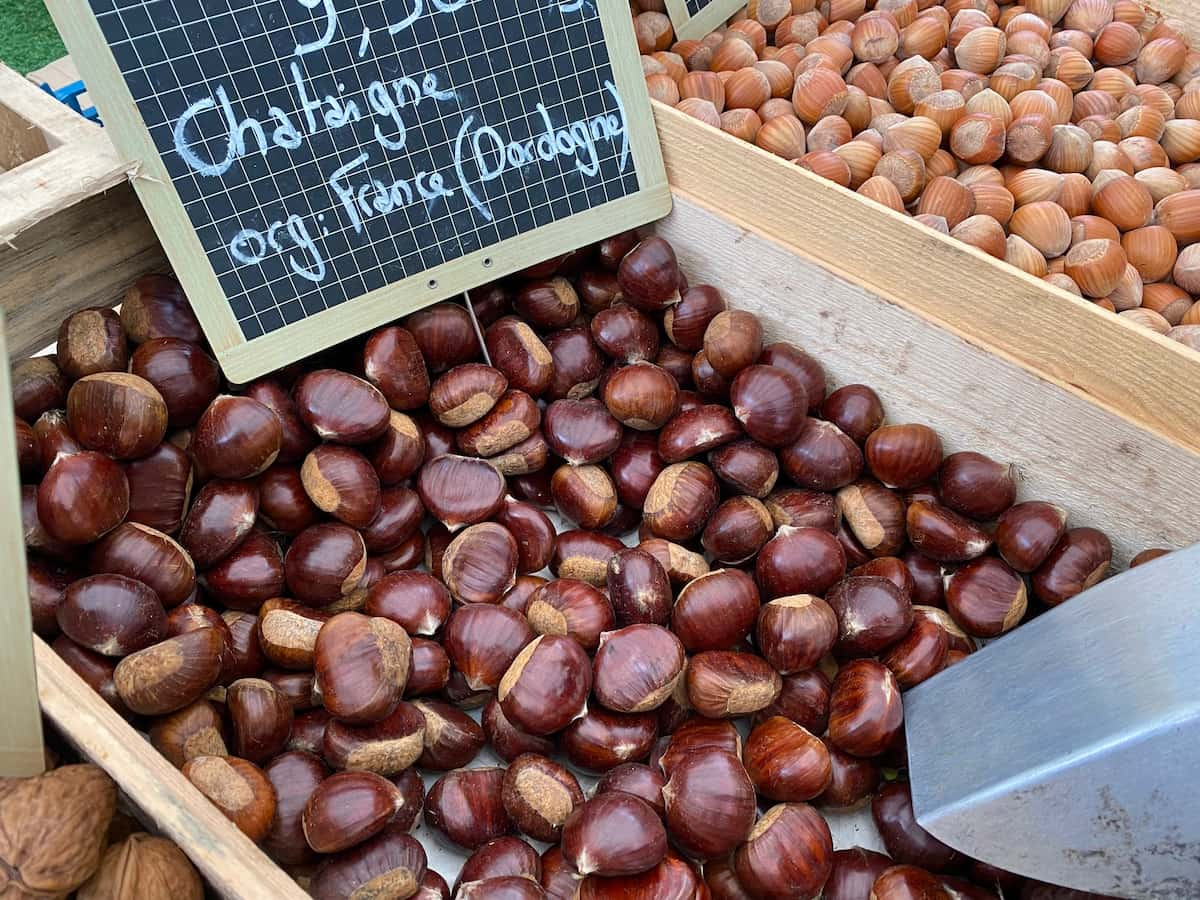
- Chestnut Season in France
- What are Chestnuts Used for?
- Are they Healthy?
- Chestnuts vs Horse Chestnuts
- Christmas in France means Marrons!
- How to Choose Chestnuts
- How to Peel and Cook Chestnuts
- Chestnut Flour (Farine de Chataîgne)
- What is Chestnut Paste?
- Savoury Dishes with Chestnut
- French Dessert Recipes with Sweet Chestnuts
Chestnut Season in France
French chestnut season is in Autumn/Winter. You'll see them sold raw at the market as of October when they're harvested. Thereafter they're available all during November, December & January, hence why they're popular at Christmas time.
What are Chestnuts Used for?
For centuries, chestnuts have been a vital ingredient in France, especially in Mediterranean and Ardèche regions. The chestnut tree, often called the "Bread Tree" (l'arbre à pain), thrives in areas where wheat struggles to grow.
They're primarily cultivated in forests and mountainous regions like Corsica, Auvergne, Cevennes, Périgord/Dordogne, and Ardèche, which earned AOP quality status since 2014.
As a result in these areas, chestnuts serve as the main cereal. Their naturally gluten-free flour appears in many regional recipes, while cooked chestnuts are enjoyed in savoury and sweet dishes - though they are never eaten raw.
The Cévennes region produces a unique chestnut syrup called 'la Cévenole'. In the Auvergne, locals often use it to craft a regional twist to the kir cocktail, a classic French apéritif.
Are they Healthy?
According to Aprifel (French Ministry of Agriculture), chestnuts are rich in Vitamin B9, potassium and fibre plus contain phosphorus and vitamins E, B2, B3, B5 and B6.

Chestnuts vs Horse Chestnuts
The sweet chestnut's long prickly cupule or "burr" is brown and holds 2-3 small nuts. Don't confuse it with the horse chestnut (or conker tree), commonly found in cities and parks.
The horse chestnut's thick green burr contains only one inedible nut, best kept as conkers for nature table decoration and as a natural anti-mite addition to your wardrobe. For more details on the differences, check the French health site, Anses.
Marron vs Chataîgne
In French, "marron" can be confusing. The 'marronier' is the horse chestnut tree (or conker tree) whose inedible fruit is called the 'marron d'Inde' (Indian chestnut 'Aesculus hippocastanum'). However, "Marron" in France generally refers to the edible sweet chestnut fruit from the Chataîgnier.

Christmas in France means Marrons!
In Autumn and Winter in Paris, it's a familiar, welcoming sight to see chestnuts roasting on top of supermarket trolleys on large pans. Sold in pokes at the exits of metro stations or on the street, they're a real treat!
Chestnuts had a poorer history but today chestnuts are in many christmas treats, especially the top French yule logs (bûches de Noël). However, perhaps the most popular French way of enjoying chestnuts over the festive season is with candied chestnuts (marrons glacés), found in most top patisseries around France.

How to Choose Chestnuts
First, to choose the best ones, ensure there are no holes where insects could have hidden. Plus, the firmer and shinier they are, the better - this means they are fresh. In France they're easily found peeled and frozen, ready to cook from our bigger supermarkets and frozen food stores like Picard.

How to Peel and Cook Chestnuts
It's important to peel chestnuts first, otherwise they will explode during cooking. Simply cut lightly, making a small incision all around the chestnut with a knife (or good kitchen scissors if you're afraid of sharp knives). Alternatively, score an 'X' on each. Be careful not to cut right through to the nut itself - just the outer skin. Once cooked, they're easy to peel.
After scoring them as above, there are a few ways to cook them. Thereafter, peeling is easiest when they're still warm (not hot, being careful not to burn):
- Microwave - cook in a microwavable dish at (600 watts) for about 3 minutes with a little water. However keep your eye on them, as all microwaves are different. They may need a minute less.
- Air Fryer - preheat to 200°C and cook on the tray in a single layer for about 15 minutes.
- Boil - like potatoes, place in a pot of cold water, bring to the boil, simmer for about 15 minutes, then drain.
- Pan-roast - place them scored in a dry pan over medium heat. Cover and cook for about 15 minutes, shaking the pan a few times during cooking.
- Oven roast - spread on a baking sheet and roast for about 20 minutes in a preheated oven at 220°C/200°C fan/425°F.
- On an open fire - for the holiday spirit. Play the music of Louis Armstrong and use a chestnut roasting pan (with holes and a long handle). This is best to cope with high heat. Cook them in the skillet for 15-20 minutes, ideally covered with a lid and shake occasionally. If no lid, just check that they don't become too charred.
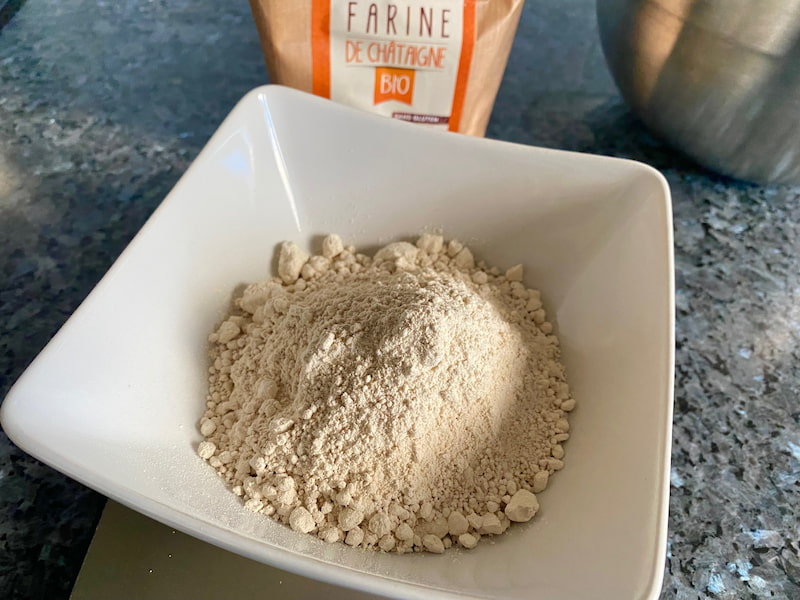
Chestnut Flour (Farine de Chataîgne)
Chestnut flour is naturally gluten free and available all year round. When using in recipes, as it tends to be pretty strong and rustic in character, lighten cakes and pastries by mixing it with regular plain all-purpose flour.
As my husband is from the island of Corsica, like in Italy, you'll find many recipes using chestnut flour in tart bases and in cakes. Many are on this blog, inspired by his family's hilltop village near Corte.
Always sift chestnut flour first, as it's prone to lumps (see FAQ about sifting flour). Mix Chestnut Flour in cakes, cookies and pancakes - for more, see recipes below.
What is Chestnut Paste?
In France, we use sweetened chestnut & vanilla purée or paste in many cakes and desserts. The most famous paste available around France is by both Clément Faugier and Sabaton.
Children are familiar with a simple dessert of fromage blanc or petit-suisse served with a dollop of the purée - also as a topping on crêpes. Added to cakes and macaron fillings, it gives extra moisture and a smoother texture (see recipes below).

What's the Famous French Pastry with Chestnuts?
The most classic French pastry with chestnut purée is 'le Mont Blanc'.
With its meringue and cream heart, it's covered in the famously thin vermicelli strands of chestnut and vanilla cream. (See more in my article on Angelina's popular classic).
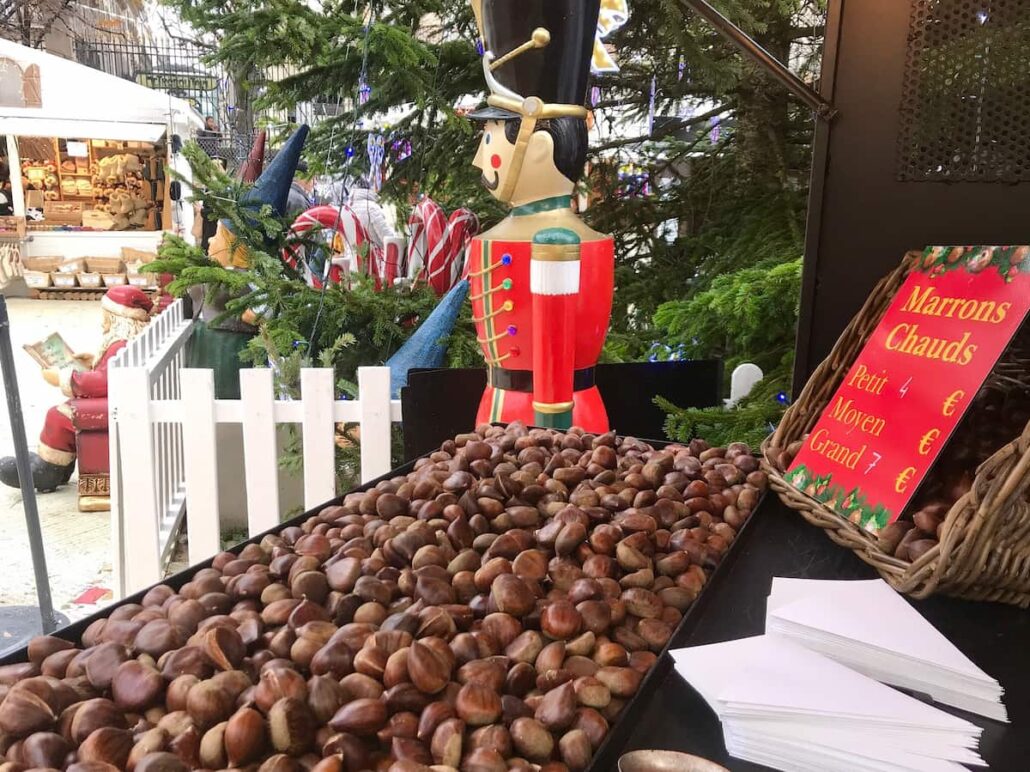
Why are Marrons Glacés so Expensive?
Enjoyed completely on their own, they are expensive due to being hand-picked. It requires a long process to make them.
Their glaze was invented by Bélisaire Boissier, a French confectioner who made the first candied chestnut or marrons glacé recipe. For more, see their Parisian shop in my article on Rue du Bac - Paris Pastry Street.

Savoury Dishes with Chestnut
Ready peeled, pre-cooked chestnuts are widely available at the farmers' markets, supermarkets and speciality stores. They come vacuum-packed, jarred, tinned, or frozen (either raw or pre-cooked).
Chestnuts add a healthy and flavourful touch to tarts, gratins and savoury dishes. Add them pre-cooked into roasted vegetables, German red cabbage (just before serving) or sautéed green beans to pair with Christmas turkey (dinde de Noël) or other main dishes. They also make a great topping for soups.
If you're using jarred whole chestnuts, remember to consume them within 2-3 days after opening.
For soups: To make a healthy Pumpkin Soup, add 12 pre-cooked whole chestnuts. They're also a delicious addition to mushroom soup for extra richness and texture.
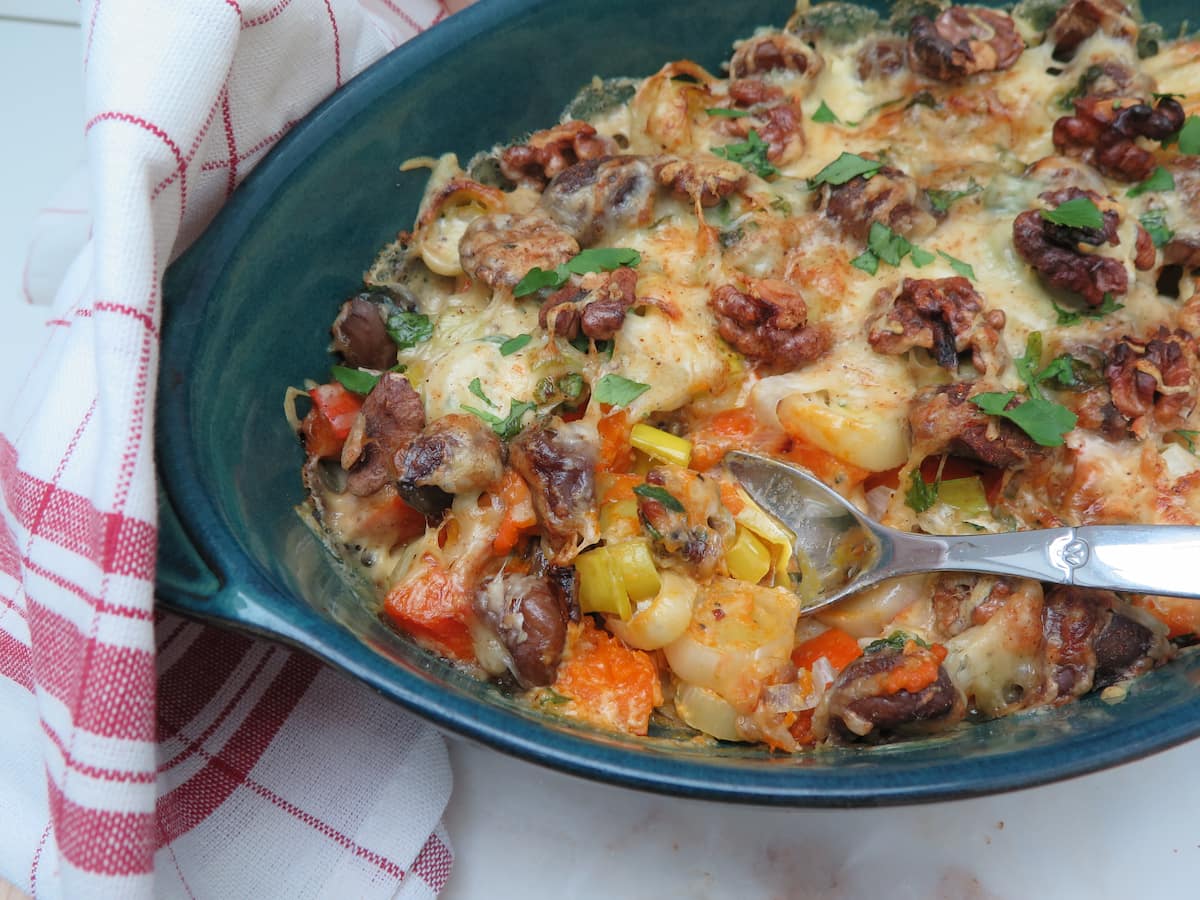
Whole cooked chestnuts are added to this bubbling cheesy Butternut and Walnut Gratin. For non-vegetarians, add bacon, chicken or leftover turkey.
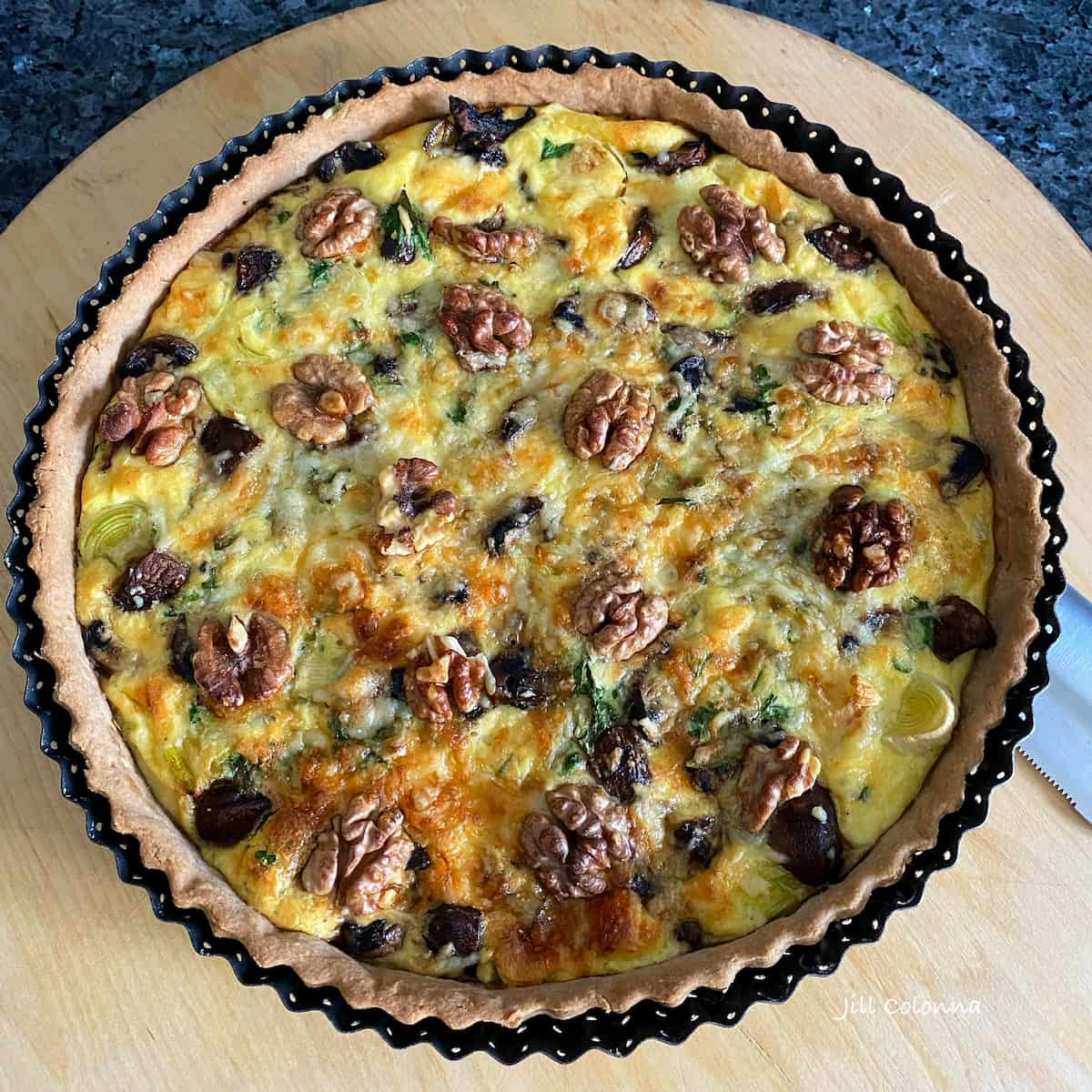
Add whole cooked chestnuts to this pumpkin and mushroom tart to create Autumnal flavours. The highlight is the moreish tart crust made with chestnut flour.
French Dessert Recipes with Sweet Chestnuts
In France, chestnuts are a holiday favourite, especially at Christmas, when candied chestnuts (marrons glacés) take centre stage. Sweet chestnut spread, candied chestnuts or flour (farine de châtaigne) are key ingredients in many festive desserts.
With Chestnut Flour

Simply spread crème de marrons on top of our favourite French pancakes (crêpes). It's one of the most popular toppings in France, and excellent also with chocolate crêpes. Try swapping out 2 tablespoons of all-purpose flour with chestnut. It's delicious!
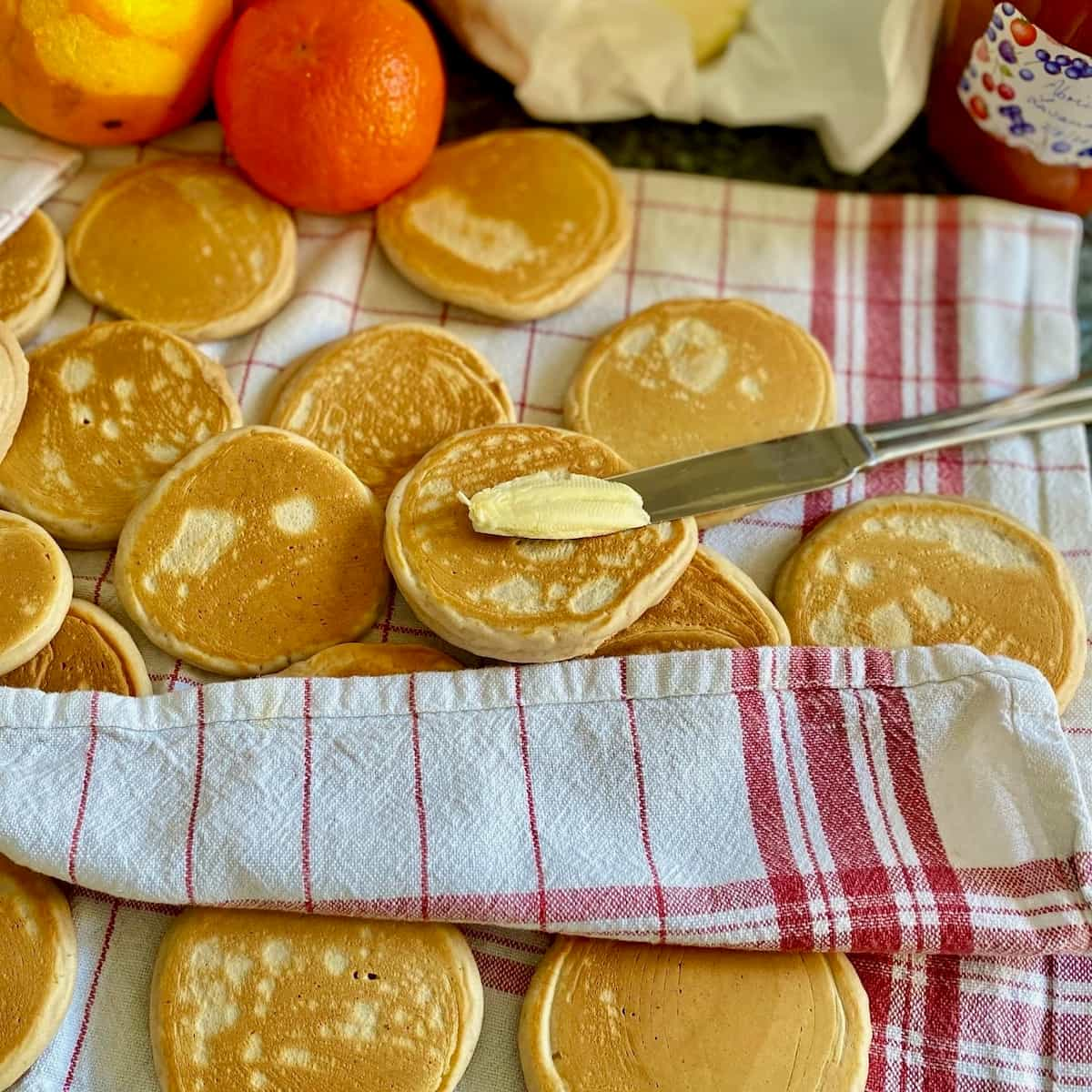
For a teatime treat with a little extra je ne sais quoi, these Scotch Pancakes (or Drop Scones) are made with chestnut flour.
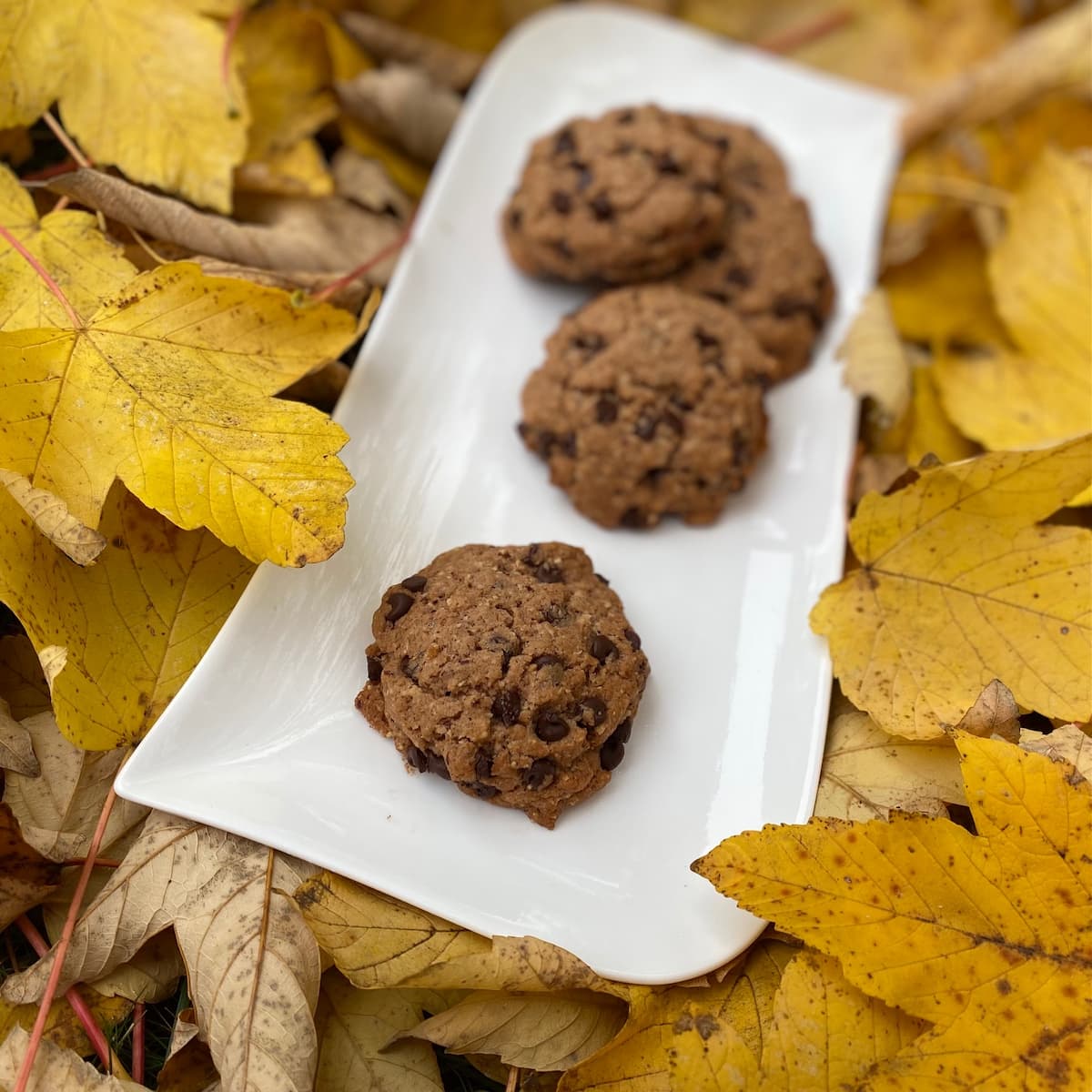
Replace hazelnut flour with chestnut flour to make Chocolate Chip and Chestnut Cookies.
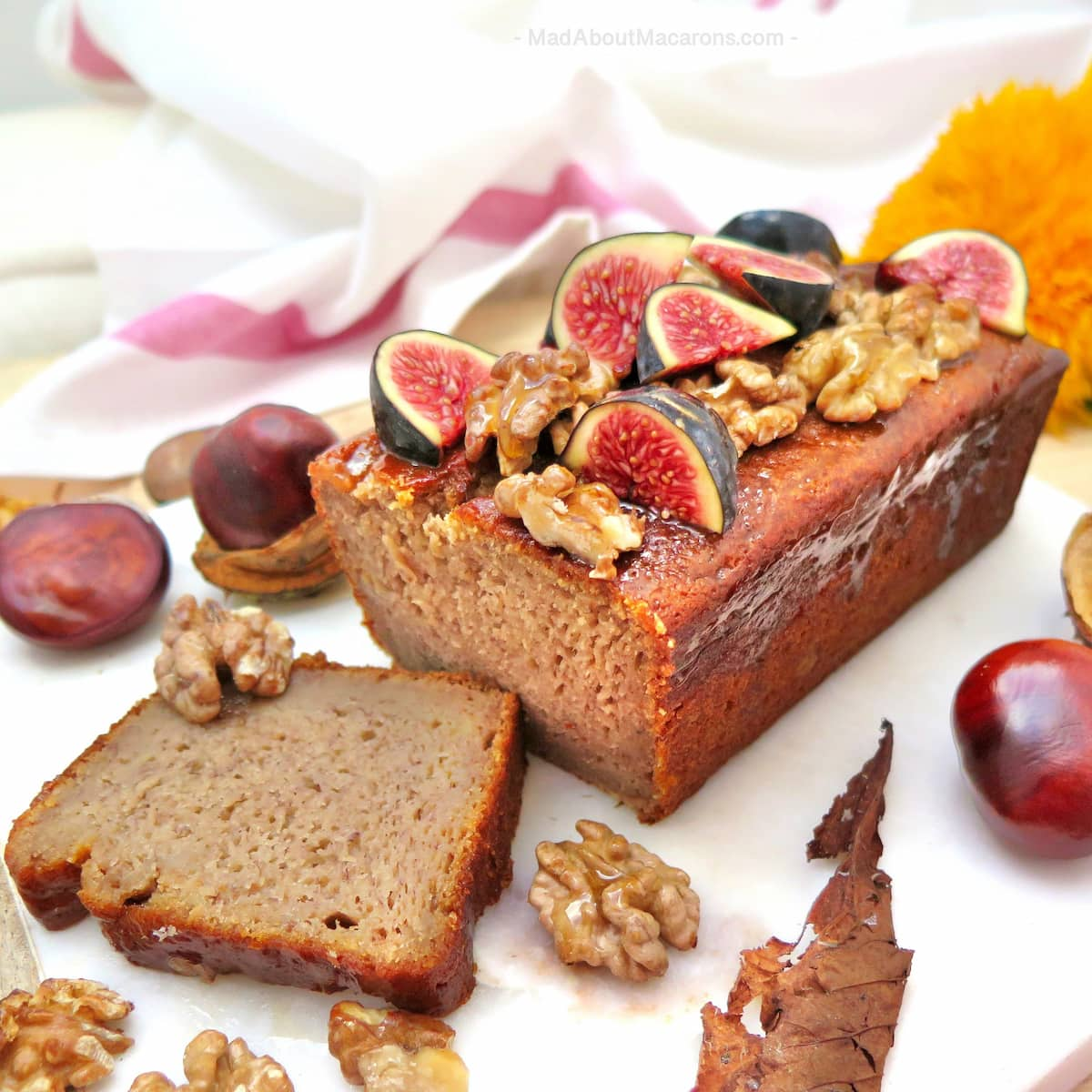
Moist banana nut bread is made extra moist with candied chestnut purée and chestnut flour - so it's a double whammy!
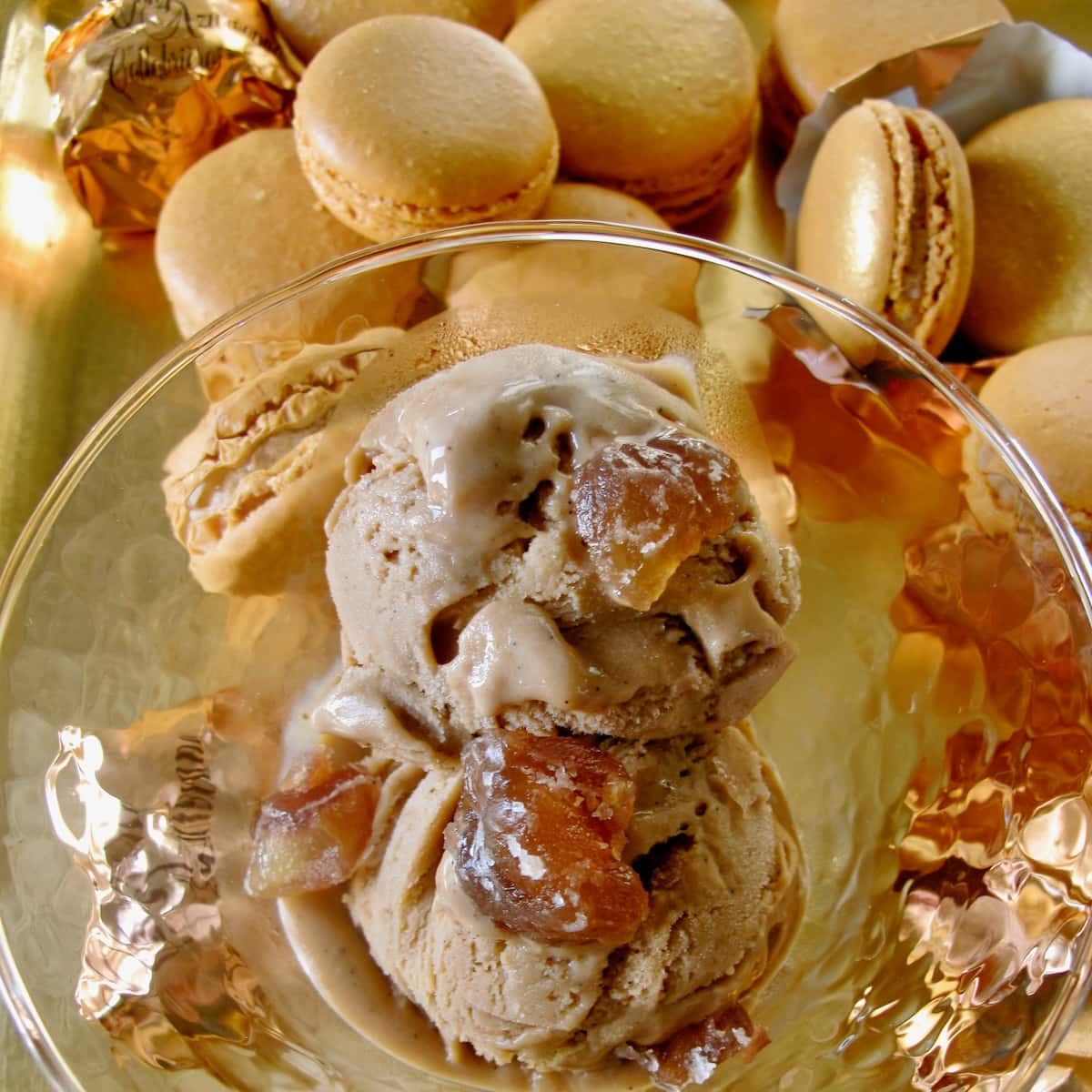
With the paste
For a treat any time of year, chestnut and vanilla ice cream is a must-try. Made with candied chestnut paste, it becomes the ultimate holiday dessert when topped with marrons glacés. Serve it on its own or pair it with palets bretons or tuiles for an elegant finish.
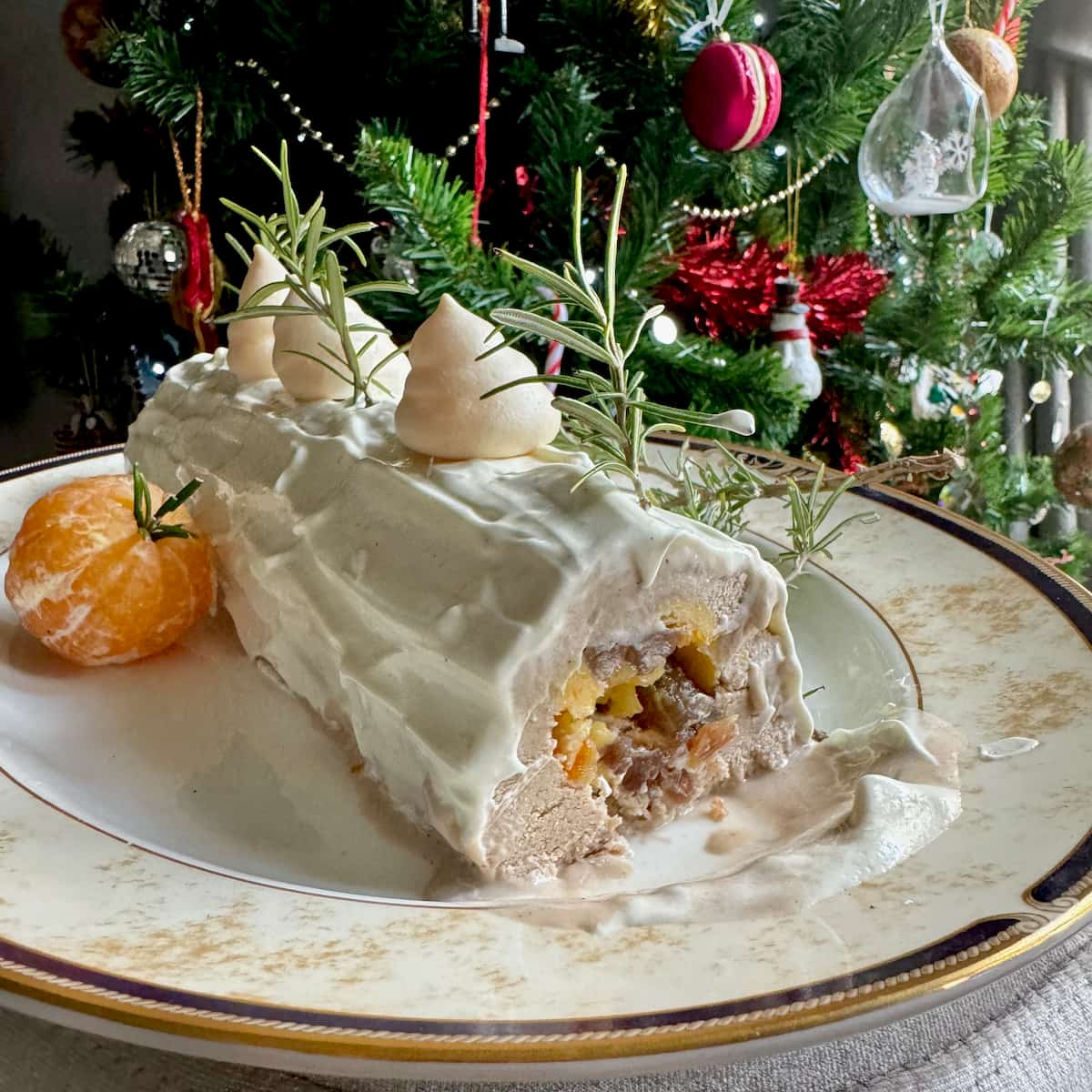
Go one step further with this ice cream and make an Ice Cream Yule Log (Bûche de Noël Glacée). Made with orange zest and candied clementines, it's a popular festive combination, as the flavours are typical of a French Christmas (Noël).
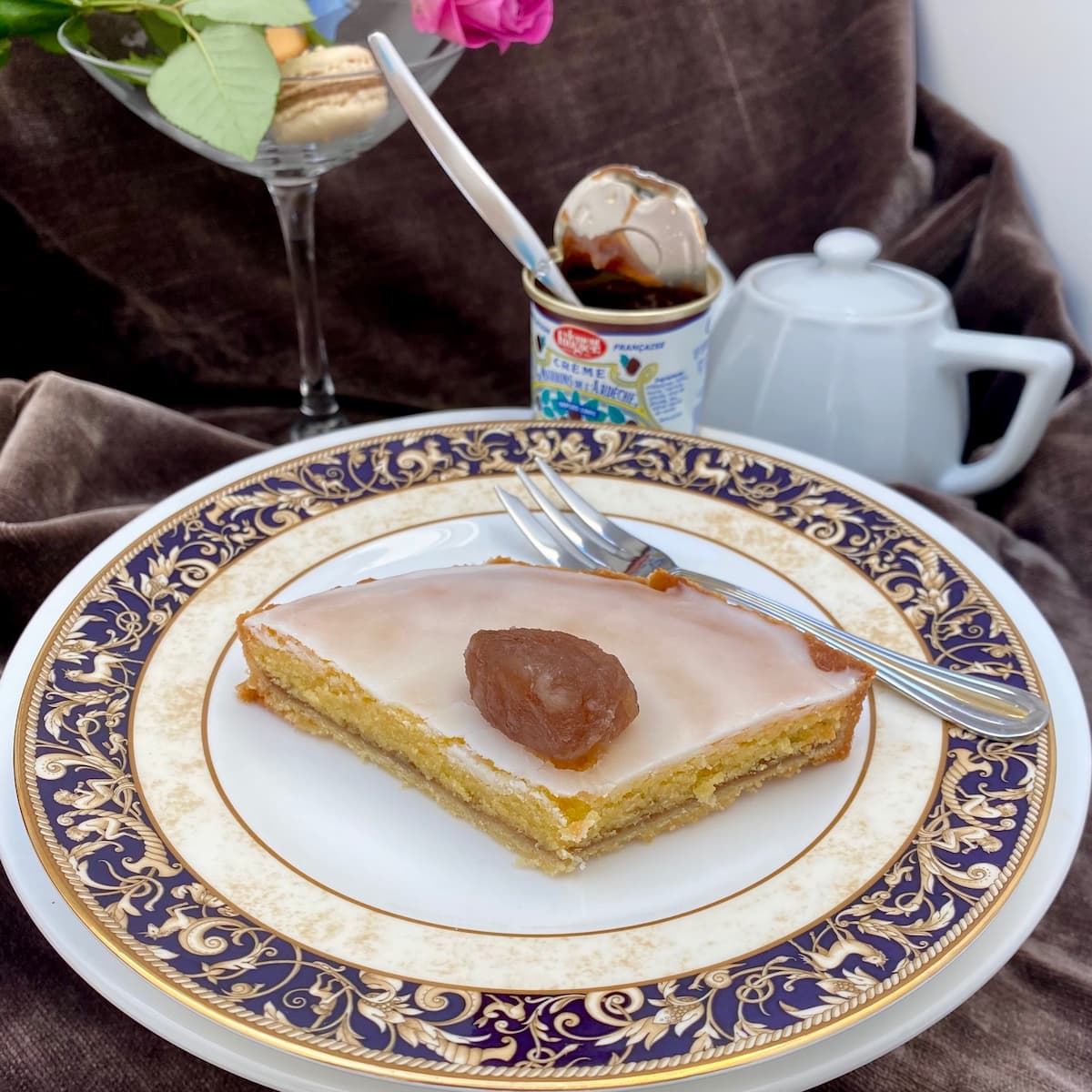
Spread a layer of candied chestnut paste to the baked sweet pastry base (pâte sucrée) of this French almond tart.
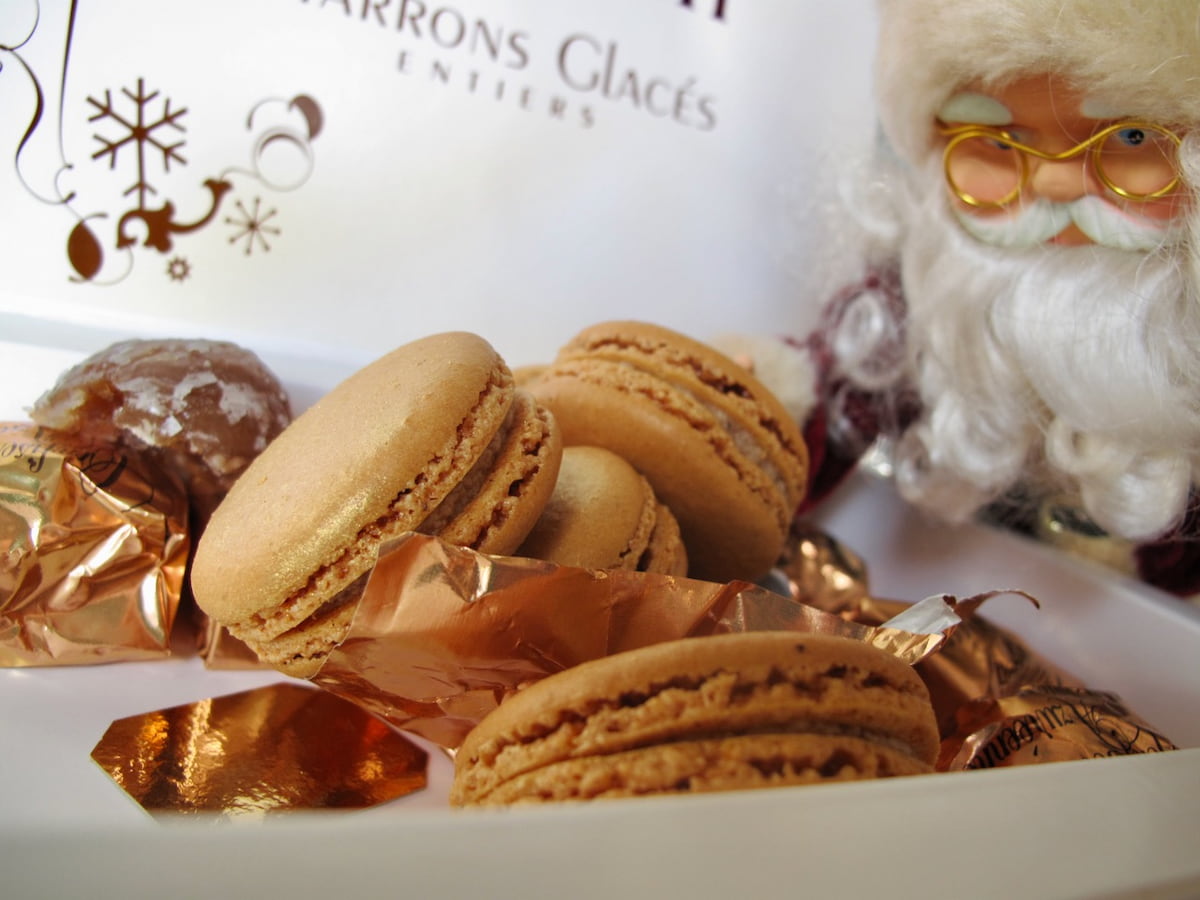
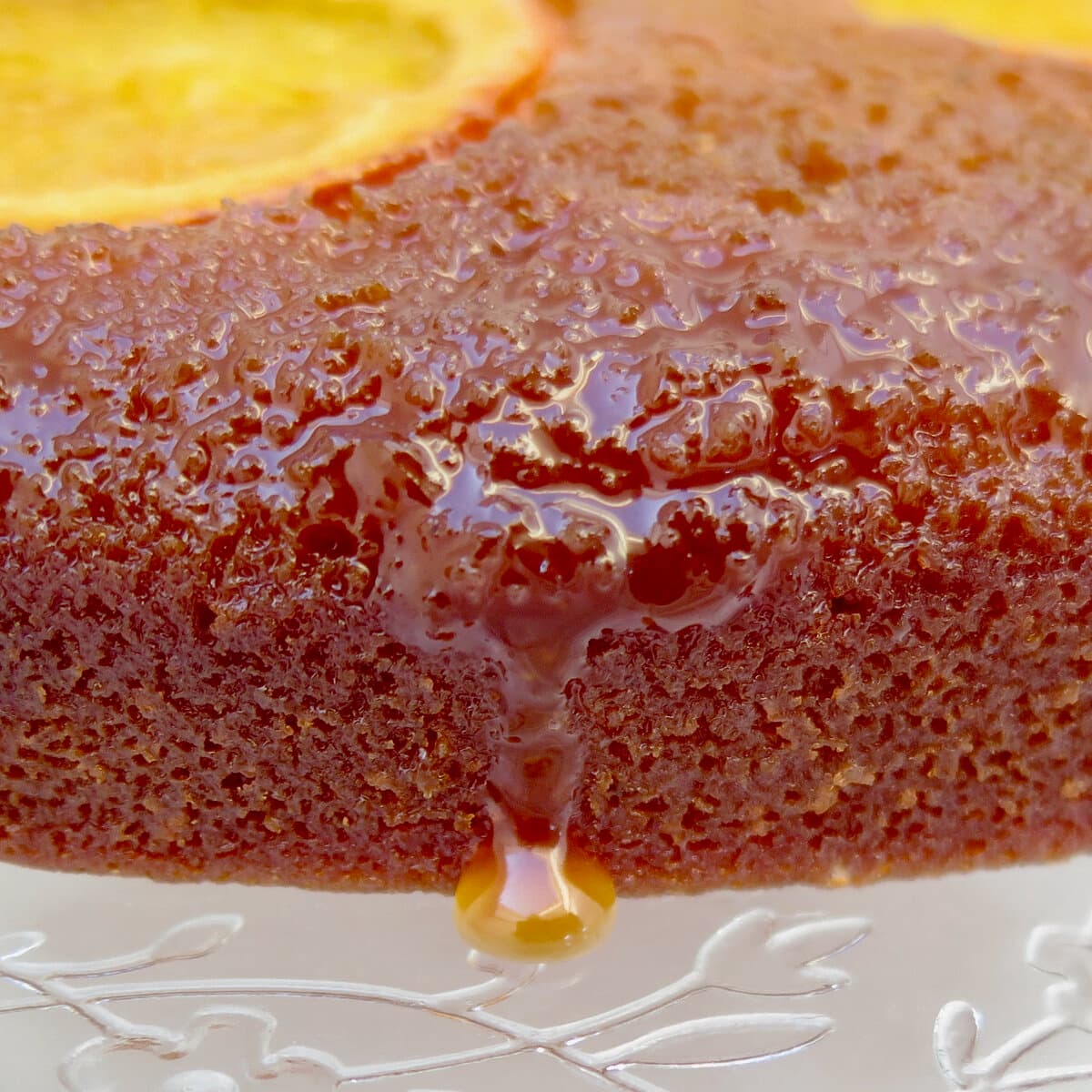
Chestnut paste is added to this sticky orange caramel cake, adding that French touch and extra moist texture. In Corsica, chestnut is paired with clementine oranges so this is my fusion of a British and French dessert.

Surprise your guests with this chestnut winter dessert. What looks like a simple meringue sandwiched with cream is much more! Open this French Meringue Filled Snowball and discover a hollow meringue filled with sweet candied chestnuts, lemon and vanilla.
Top broken marrons glacés on desserts, such as Whisky ice cream or the French Vacherin ice cream cake.
This post was first published November 19 2021 but is now completely updated.

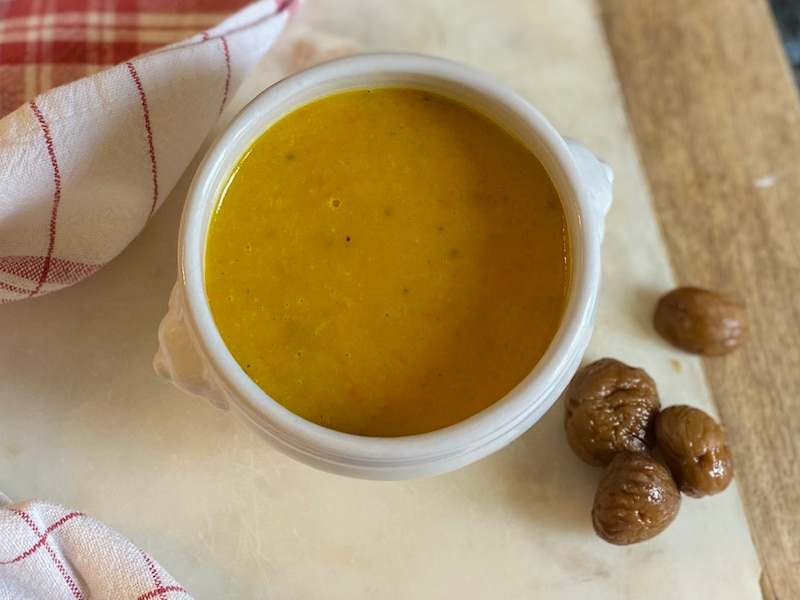
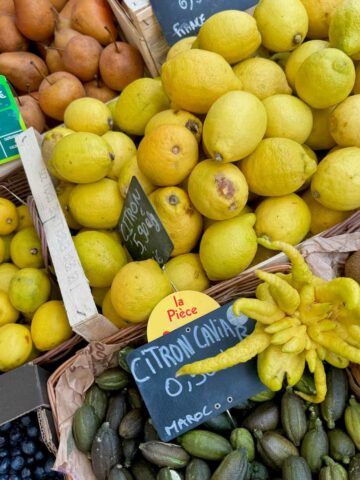
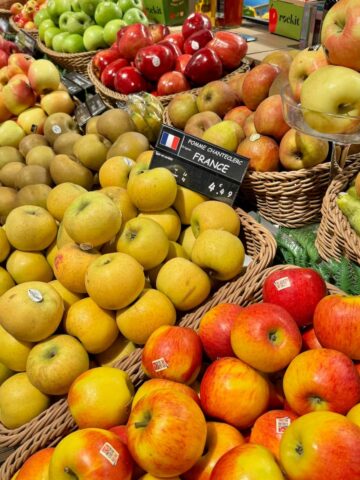
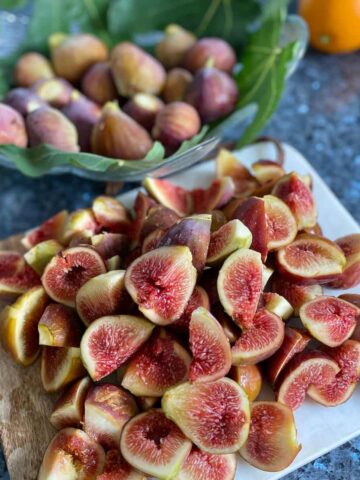


pamela
What is your technique for peeling chestnuts?
Jill Colonna
Thanks so much for asking this, Pamela. I realised I had left out a whole section! I've now included the peeling and cooking section in the post. Enjoy!